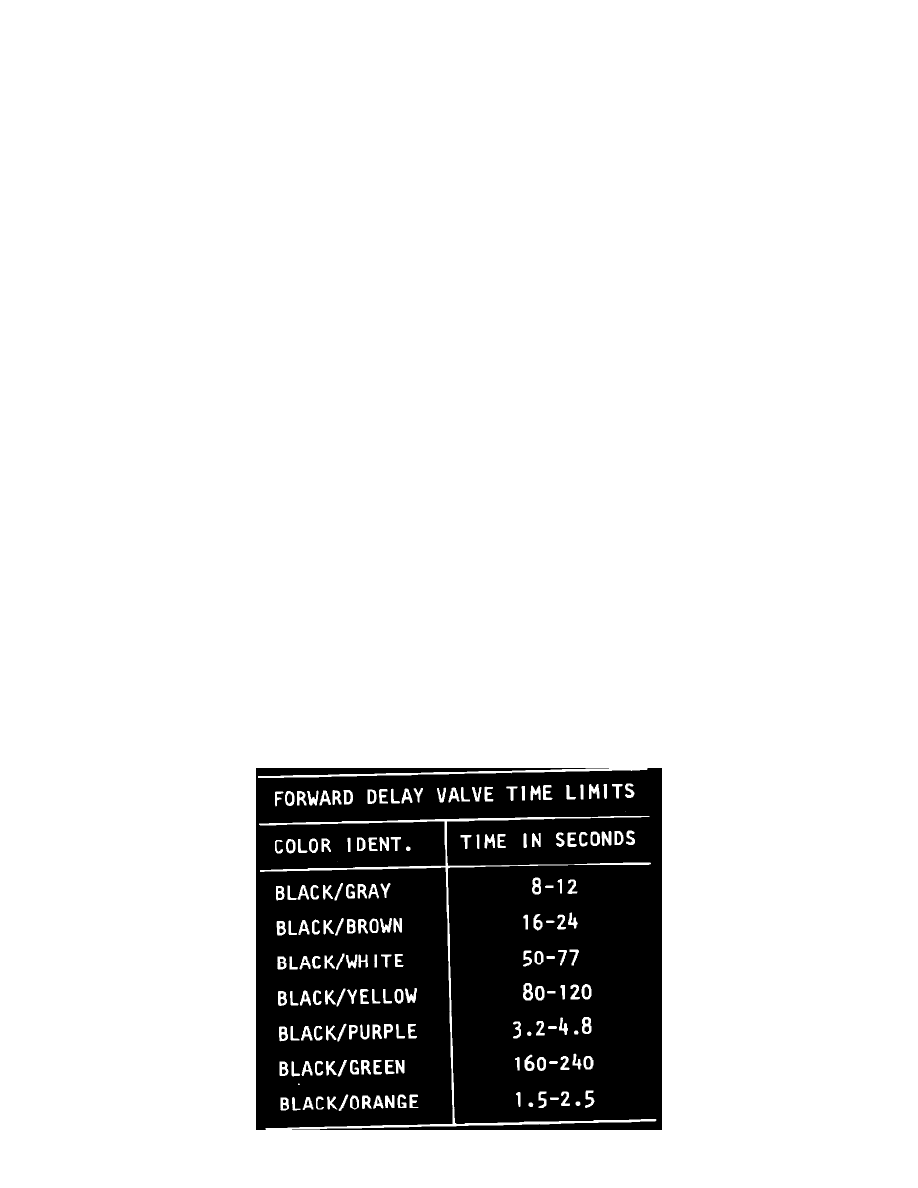Wagoneer V8-360 5.9L VIN N 2-bbl (1983)

Exhaust Gas Recirculation: Testing and Inspection
The EGR valve on the intake manifold must be removed, cleaned and inspected at the mileage intervals as specified. The exhaust gas passages in the
intake manifold also should be inspected and cleaned as required.
After cleaning, open the EGR valve manually by pressing down on the pintle, then release. If the valve does not return to the fully closed position,
it must be replaced.
Inspect the exhaust gas inlet and discharge passages of the intake manifold for any restriction caused by carbon or lead deposits.
On some six cylinder engines, lead or carbon deposits build up rapidly in the exhaust gas discharge passage upper hole. If the deposits cannot be
removed a 9/16 inch drill bit may be used.
OPERATIONAL CHECK
With engine idling at normal operating temperature, accelerate engine to 1500 RPM and release throttle. A definite movement should be noticed in the
EGR diaphragm. If diaphragm does not move, check for leaking vacuum lines, faulty vacuum signal to EGR valve, defective EGR valve or back pressure
sensor.
With engine idling at normal operating temperature, manually depress EGR valve diaphragm. Engine speed should drop immediately, indicating
proper operation of the EGR valve during engine idling. If there is no change in engine speed and the engine is idling properly, exhaust gases are not
reaching the combustion chamber, and the probable cause is a plugged passage between the EGR valve and the intake manifold. If the engine idles
poorly and the speed is not greatly affected when the EGR valve diaphragm is closed, the EGR valve is not stopping the flow of exhaust gases to the
combustion chambers. Check for defective hoses, incorrectly routed hoses or defective EGR valve.
EGR CTO SWITCH TEST
Engine coolant temperature should be below 100° F.
1.
Check vacuum lines for leaks and correct routing.
2.
Disconnect vacuum line at EGR valve and connect a vacuum gauge.
3.
Operate engine at approximately 1500 RPM. No vacuum should be indicated on gauge. If vacuum is indicated, replace EGR CTO switch.
EGR DUMP VALVE
1.
Start engine and allow to reach normal operating temperature.
2.
Disconnect vacuum signal dump valve vacuum hose from manifold and plug the manifold connection.
3.
Accelerate engine to 2000 RPM. There should be vacuum at exhaust ports on bottom of valve. If not, replace valve.
4.
Connect vacuum signal dump valve vacuum hose to manifold and accelerate engine to 2000 RPM. There should be no vacuum at exhaust ports on
bottom of valve. If there is, replace valve.
THERMAL VACUUM SWITCH
1.
Cool air cleaner at a temperature below 40° to 50° F.
2.
Disconnect vacuum hoses from Thermal Vacuum Switch (TVS), then connect an external vacuum source to one nipple and a suitable vacuum
gauge to other nipple.
3.
Apply vacuum to TVS and observe gauge.
4.
If gauge indicates vacuum through TVS when temperature is below 40° to 50° F, replace TVS.
5.
Start and run engine until air cleaner temperature is above 50° F. If gauge does not indicate vacuum, replace TVS.
